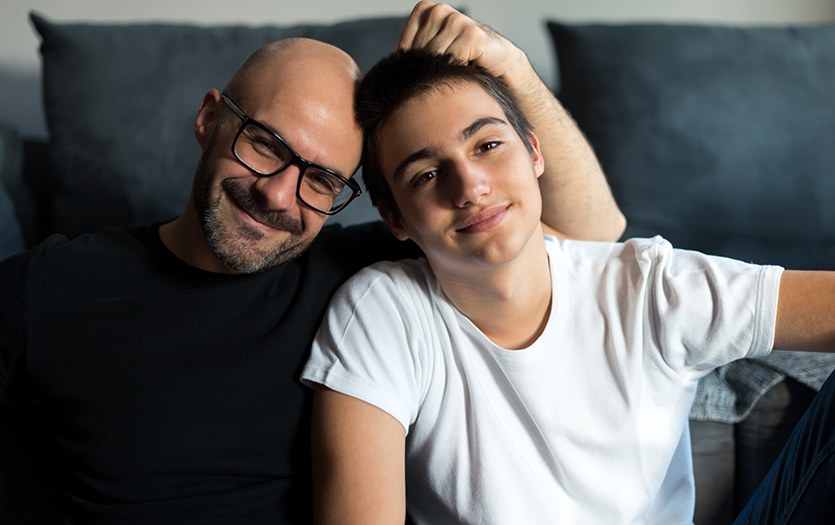
Based on current survey data, researchers estimate that there are approximately 9 million LGBTQ+ Americans. For the parents of teenagers who identify as LGBTQ+ it can be difficult to know how to ensure their children feel seen and accepted. Here is some general guidance for gaining a better understanding and walking beside your child.
What parents need to know about gender identity
Children form their gender identity early. Most children start to identify their gender around age three. For some, their gender identity doesn't match the sex they were assigned at birth. Many transgender and gender-diverse adults remember feeling at a young age that there was a difference between their bodies and their gender identity. Others didn't feel this way until later in life.
Children and teens grow and develop quickly. Before and during puberty, they may feel more like one gender some of the time, and more like another gender at other times. That's why it can be helpful to explore nonmedical or reversible options for those who are transgender or gender diverse. One example is helping your child live as their identity. They may want to wear the clothes of their gender identity. Or they may want to use a different name or different pronouns.
How you can support your teen who is LGBTQ+
LGBTQ+ teens sometimes don't reveal their sexual orientation or gender identity for a long time. They may be afraid of what their friends, family and others will say and do. They can feel relief when they come out to their family and friends and find love, support and acceptance. Here are some ways you can support your LGBTQ+ teenager.
Show unconditional love.
You may think it's obvious to your child that nothing could change how much you love them, but be sure to tell them (and show them) anyway. Coming out can be a difficult and uncertain time, and reminding your child that you're always there for them can be very reassuring.
Let your teen decide who they come out to, and when.
Support whatever they decide and offer your child help planning how to come out to people if they need it.
Use the language your teen uses to describe their sexual orientation or gender identity.
Some terms may not be familiar to you. That's okay. Do your best to learn about them and do your best to use them.
Use your teen's correct pronouns.
Once other friends and family members know what your child's pronouns are, insist that they use the correct pronouns, too. You might make a mistake now and then. That's okay. Correct your mistake and move on.
Be your teen's advocate.
Stand up for your child if they aren't being treated equally, kindly or in an inclusive way. That might mean talking to the school about their policies, or stepping in when family members or acquaintances are critical. Show your child that you're on their side.
Show your teen you're interested in who they are.
For example, start a conversation about who their LGBTQ+ mentors are. Find out if there are famous people who are LGBTQ+ that they look up to and ask your child to tell you what they like about those people. Ask whether your child is interested in dating anyone and talk about dating guidelines or rules.
Watch for signs of depression or bullying.
LGBTQ+ youth are at higher risk for these things. So, if your teen starts acting withdrawn or anxious, avoiding school or friends, or is behaving in a way that seems unusual or concerning to you, do your best to find out what's going on. If they're being bullied, talk to the school or their teachers. If you suspect your child is depressed, get help from a counselor.
Learn more and get involved.
Organizations such as Parents, Families, and Friends of Lesbians and Gays (PFLAG), The Trevor Project or Trans Lifeline are a good place to start.
Copyrighted material adapted with permission from Healthwise, Incorporated. This information does not replace the advice of a doctor.



